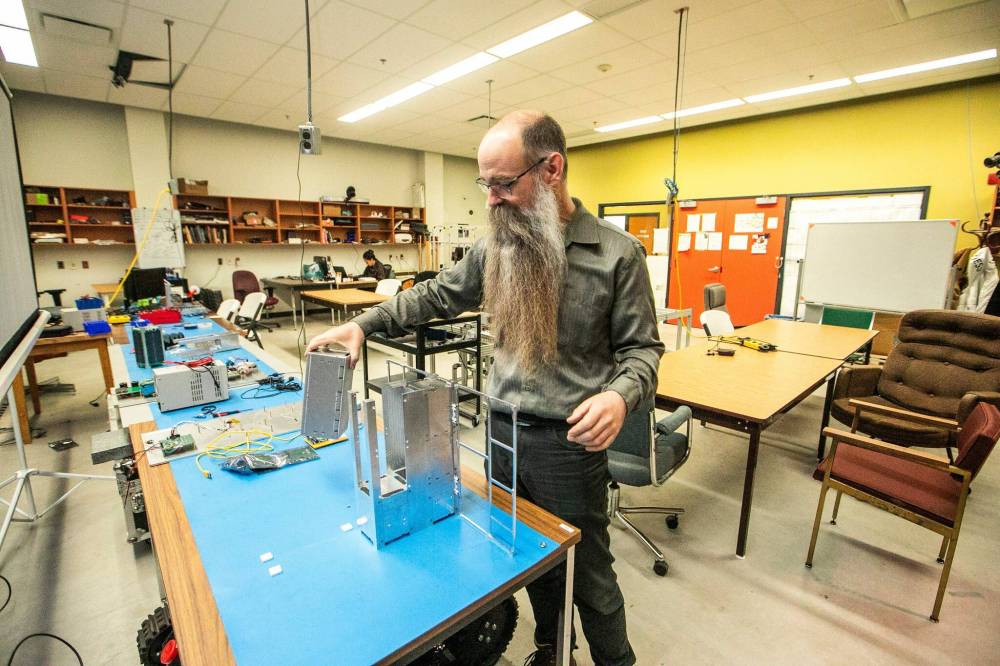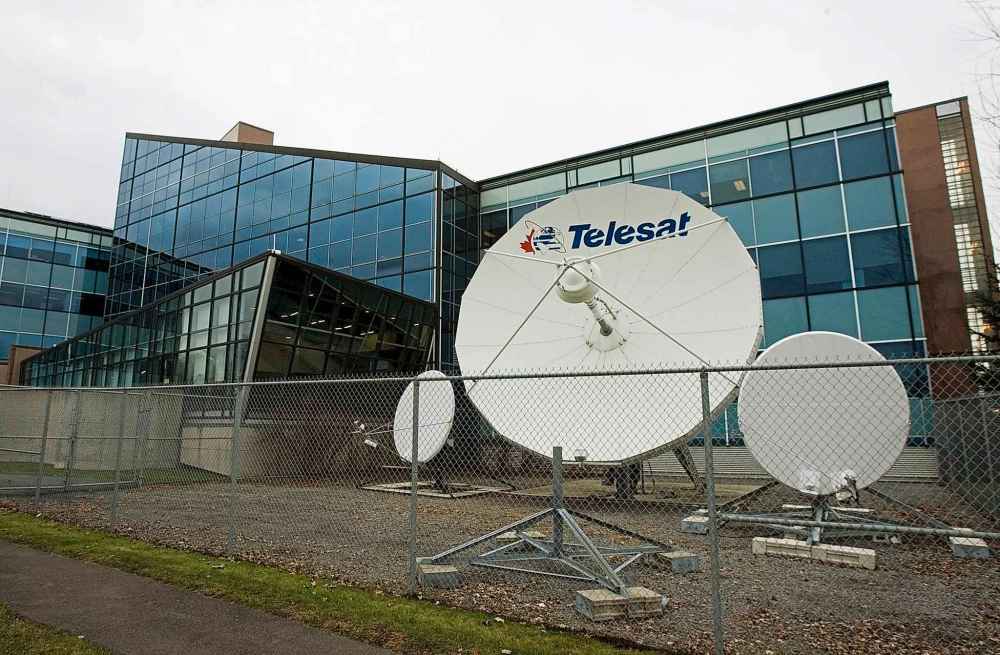Low-earth orbit, high expectations
Observers ‘seeking Canadian services’ look to Starlink competitor Telesat, which launches satellites next year
Advertisement
Read this article for free:
or
Already have an account? Log in here »
To continue reading, please subscribe:
Monthly Digital Subscription
$1 per week for 24 weeks*
- Enjoy unlimited reading on winnipegfreepress.com
- Read the E-Edition, our digital replica newspaper
- Access News Break, our award-winning app
- Play interactive puzzles
*Billed as $4 plus GST every four weeks. Offer only available to new and qualified returning subscribers. Cancel any time.
Read unlimited articles for free today:
or
Already have an account? Log in here »
Elon Musk’s Manitoba footprint extends beyond the Tesla-peppered streets into the satellite-laden sky. And as his electric vehicle company’s stock plummets, Canadian companies are positioning themselves as competitors to another Musk venture: Starlink.
It’s unclear how many Manitoba residences connect to the satellite-based internet service provider. Philip Ferguson is one.
“I have to say that while Starlink provides exceptional service, I, like most Canadians, (am) seeking Canadian services,” Ferguson said.

MIKAELA MACKENZIE / FREE PRESS
Philip Ferguson, a University of Manitoba engineering professor and the director of STARLab, shows a small satellite built for space air traffic control in his satellite lab. Ferguson is planning to switch from Starlink, Elon Musk's internet provider, to Canadian-made alternative Telesat next year.He’s keeping a close eye on Telesat, an Ottawa-based company aiming to launch its own global internet service next year.
Ferguson researches spacecraft at the University of Manitoba; he’s an engineering professor. He’s hopeful Telesat will act as a Starlink replacement.
Telesat intends to launch 198 low-earth orbit satellites beginning in 2026.
It touts its future services as being able to connect rural and remote communities, a market Starlink covers. Both companies are set to host satellites closer to earth than other internet providers, making them faster, Ferguson explained.
Satellites are used in remote areas that can’t handle fibre infrastructure and other land-based internet services.
“I think the biggest barrier is convincing people that Telesat will provide the same or better service than Starlink already provides,” Ferguson said. “But what Telesat has going for them right now is that they’re Canadian.”
A Telesat representative wasn’t available for comment by print deadline.
The firm’s chief executive answered questions on CBC Radio earlier this month. He explained Telesat will initially provide service to other internet providers, unlike Starlink’s direct-to-home setup.
Ottawa has committed roughly $2.14 billion in funding for Telesat Lightspeed through a loan. Telesat has its own US$1.6 billion equity contribution, it said in a 2023 news release.
The Canadian satellites will be further from Earth and fewer than Starlink’s constellations, Ferguson noted. Starlink has thousands of spacecraft in orbit.
Still, he’s hoping to switch providers. Telesat’s current timeline sees its internet available globally by the end of 2027.

Ferguson and his research team are studying how to connect Inuit communities to high-speed internet using airships. Telesat’s internet could be an option down the line, he said.
“Given the security concerns and the sovereignty concerns that we all face as Canadians — particularly people that live in the North — I think Telesat would provide an excellent opportunity,” Ferguson said.
Earlier this month, Liberal Leader Mark Carney visited Nunavut to announce Arctic security initiatives. Sovereignty has become a common topic since Donald Trump became the American president for the second time. The U.S. leader has repeatedly called for Canada to become the 51st state.
Musk has taken a pivotal role in Trump’s administration, slashing federal government jobs through the Department of Government Efficiency. He’s not an elected official.
The Manitoba government funnelled $100,000 towards Starlink in 2023. The technology was meant to connect remote Manitoba Keewatinowi Okimakanak residents to virtual court appearances, victims services and other community supports, then-justice minister Kelvin Goertzen announced at the time.
Manitoba has an agreement with Starlink to provide service to several remote areas, a government spokesperson wrote in a statement without elaborating.
“The contract has not been terminated at this time,” the spokesperson said. “The province is monitoring the situation and considering its options.”
Manitoba Hydro Telecom will resume operations in the latter half of 2025 and will work with proponents, so Manitobans can “gain greater access to broadband services” across the province, the spokesperson continued.

Ontario Premier Doug Ford ended that province’s $100 million contract with Starlink earlier this month. The money was slated to service remote areas.
Rock Networks, an Ottawa-based communication systems integrator, is hoping to fill the void. It’s reached out to the Ontario government, highlighting the “multiple (satellite) constellations” available through its brand and its Canadian roots, said the company president.
For now, Rock Networks is working with Manitoba-born Broadband Communications North to service 18 Indigenous communities with high-speed internet.
No communities have been hooked up to date; the groups are solidifying funding for the first eight communities, said Joe Hickey.
“It always takes longer than you would like,” noted Rock Networks founder and president.
Hickey’s aiming for connections to be made later this year or in early 2026. The feds announced $7.5 million for the project earlier this month; Bloodvein, Brochet, Lac Brochet, Moose Lake, Poplar River, Pukatawagan, Shamattawa and Tadoule Lake are the first communities slated for service.
Rock Networks plans to train Broadband Communications North; the Manitoba company, which is Indigenous-led, will take ownership of the network.
United Kingdom-based Eutelsat OneWeb’s satellites and Nokia’s 5G capacity will power the network, Hickey said.
“We are very excited about the opportunity for Canadian-based companies to get (new) opportunities,” Hickey said, considering the recent ‘Buy Canadian’ sentiment. “(But) we need to be cognizant that there are other competitors that are non-U.S. based in the market.”
Starlink has at least 400,000 Canadian customers, Musk stated on X in July. Manitoba’s Frontier School Division began installing Starlink satellites in 2021.
— with files from The Canadian Press
gabrielle.piche@winnipegfreepress.com

Gabrielle Piché
Reporter
Gabrielle Piché reports on business for the Free Press. She interned at the Free Press and worked for its sister outlet, Canstar Community News, before entering the business beat in 2021. Read more about Gabrielle.
Every piece of reporting Gabrielle produces is reviewed by an editing team before it is posted online or published in print — part of the Free Press‘s tradition, since 1872, of producing reliable independent journalism. Read more about Free Press’s history and mandate, and learn how our newsroom operates.
Our newsroom depends on a growing audience of readers to power our journalism. If you are not a paid reader, please consider becoming a subscriber.
Our newsroom depends on its audience of readers to power our journalism. Thank you for your support.
History
Updated on Wednesday, March 26, 2025 9:35 AM CDT: Corrects reference to school division







